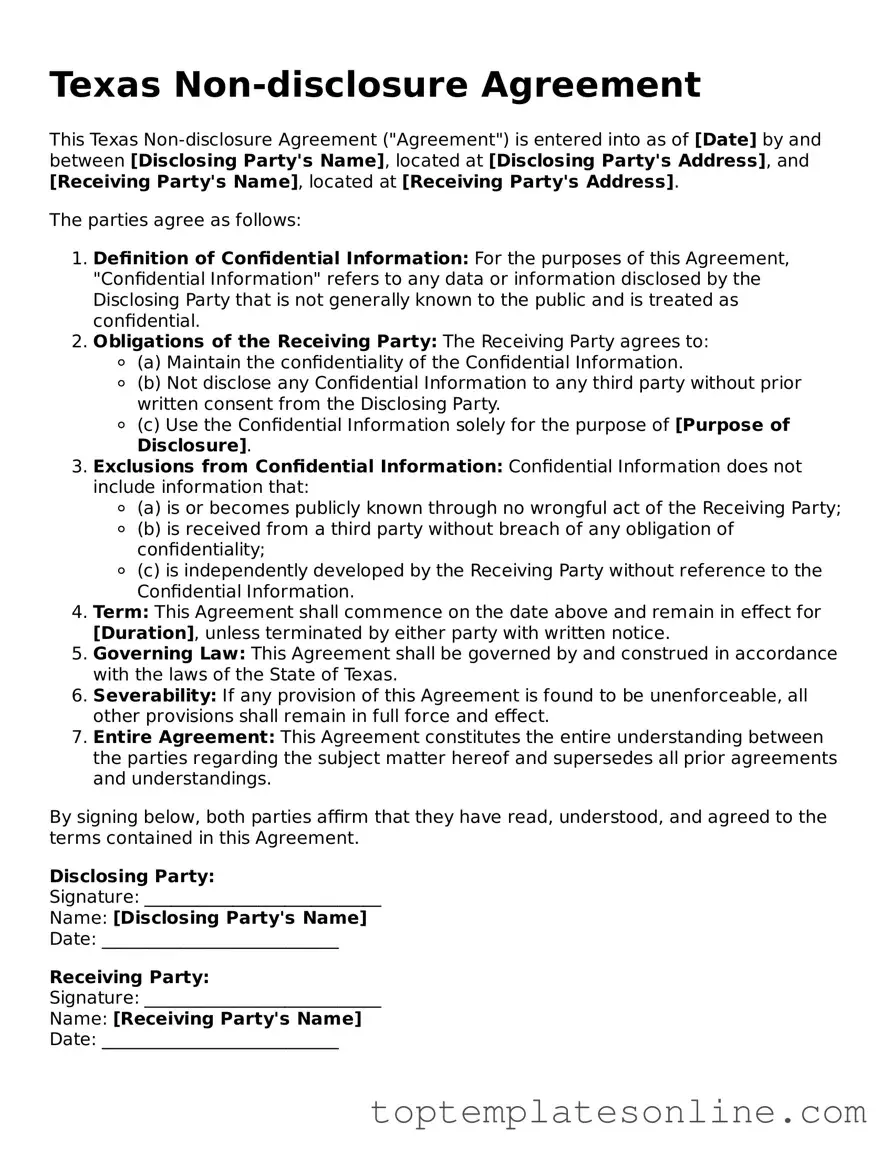Blank Non-disclosure Agreement Template for Texas State
A Texas Non-disclosure Agreement (NDA) is a legal document designed to protect confidential information shared between parties. By signing this agreement, individuals or businesses commit to keeping sensitive information private, ensuring that it is not disclosed to unauthorized third parties. Understanding this form is crucial for anyone looking to safeguard their proprietary information in a business setting.
Customize Non-disclosure Agreement Here
